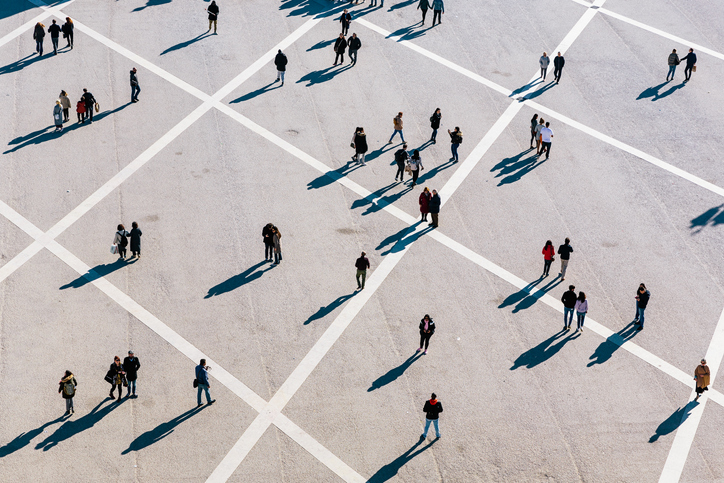The role of brand in M&A: Financial Services
The mergers and acquisitions (M&A) market hit record-breaking growth in 2021 and the first part of 2022, seeing the largest-ever volume of transactions and aggregate deal value globally.
Hope Schmalzried + Aaron Hall
October 2023
What prompted us
From Amazon’s acquisition of MGM to Discovery’s merger with WarnerMedia, this dynamic M&A growth was not only a relative anomaly, but also an environment rich for new brand creation.
As branders with notable success in guiding such world-class companies as Bristol Myers Squibb, Glanbia and the Hewlett-Packard Company through large-scale M&As, we were interested in what this hefty transaction data could tell us about post-deal branding decisions.
More activity in the M&A market creates more opportunity for brands to come together, reposition or rebrand all together. But we wondered: did that increased activity lead to an increased number of net-new brands created over these years? Were companies leaning on co-branding approaches, or more of a pure acquisition strategy? And how, after the hundred-billion-dollar honeymoon period was over, did these companies fare?
What prompted us

What we did
We began our investigation with an S+P Capital IQ data set, which contained all public M&A transaction data in the U.S. from January 2019 to January 2023. This time frame was significant, because it encompassed both pre- and post-Covid M&A activity. We then prioritized the following industries for a deeper look:
Energy
Healthcare
Technology
Financial Services
What we did
From there, we defined a set of brand metrics to evaluate for each transaction.
Did the brands:
Create a net-new, post-deal brand?
Remain independent with separate branding?
Follow an acquisition strategy where the purchased company is absorbed into the acquirer brand?
Take a co-branding or endorsed branding approach?
Wait on a branding decision pending full deal transaction?
What we expected to see
We speculated that each industry would have unique trends—and that net-new brand creation would explode during such an active period.
To these hypotheses, the data said both yes and no.
For example, branding decisions can be tracked on an industry-by-industry basis. Take the energy and technology sectors. We concluded that the former was more likely to engage in a pure acquisition strategy, whereas the latter embraced endorsed or co-branding approaches.
Yet as brand creators, we were particularly surprised by the dearth of net-new brands across industries: creation of a net-new brand occurred no more than 2% of the time across selected industries.
So, if a surplus of net-new brands was not the outcome of increased M&A activity, what were the outcomes?
What we expected to see

What we found

In the financial sector, 50% of M&A transactions followed a separate branding decision, meaning both entities remained independent with separate branding. This was particularly common for local banks and credit unions. FSB Holdings Limited’s April 2022 purchase of Freeland State Bank illustrates this phenomenon. Freeland State Bank, located in Freeland, Michigan, and known locally as “Your Hometown Independent Bank,” adheres to their slogan: remaining independent in branding post-deal. It is possible that regulatory rules might require separate branding of regional consumer banks, leading to the two brands persisting.
From 2019 to 2023, 23% of the time financial businesses followed an acquisition strategy where the purchased company was absorbed into the purchasing brand, which was slightly more common in the asset management, wealth management and lending space. In November 2021, for example, Filbrandt Wealth Management, LLC, was acquired by Savant Capital, LLC. Both brands now operate under Savant University Wealth Management, and Filbrandt—as a brand and/or landing page no longer exists.

What we found
Special purpose acquisition companies (SPACs) have been wildly popular over the past few years—making up 22% of our data set. And to represent financial transaction trends more accurately from 2019 to 2023, we added SPACs as a new category for this industry analysis.
Oftentimes, a traditional M&A branding decision follows a standard arc: a purchasing company acquires an existing brand and either creates an entirely new brand or takes a co-branding/merged approach. But SPACs operate a bit differently, taking the shape of a “blank check” company with no brand, where the sole purpose of the transaction is to take the purchased company (which could be in any industry) public. Post-deal, the name listed on Nasdaq is often that of the purchased company—leaving the SPAC name and brand behind. In this way, SPACs are unbranded vessels for public companies.
For example, in January 2023, Monterey Capital Acquisition Corporation took, via SPAC, ConnectM Technology Solutions public. Once approved, it will be listed as CNTM on Nasdaq. Monterey Capital Acquisition Corporation has neither a website nor externally facing brand assets. This tendency, to dissolve the purchasing entity and promote the purchased company, is likely why we see little to no branding changes in SPAC financial acquisitions.
Only 4% of the time did financial M&As result in an endorsed or cobranding strategy—which occurred across both smaller regional banks and larger asset management firms. For instance, Wings Financial Credit Union purchased Settlers Bank in 2022 to become “Settlers Best Credit Union” and Aristotle Capital Management purchased Pacific Asset Management to become “Aristotle Pacific
Capital.” (see examples below).

Insights
While we see a healthier range of branding decisions in the financial industry (compared to other heavily regulated industries, like energy)—the majority of them promote the brand that is most established at that time.
Reputation is everything, and that’s true of the financial sector: when two brands remain separate, like the small regional banks, credit unions or insurance companies, it could be because those entities have trust and prestige in their geographies that need to be upheld. It could also be regulatory issues around changing consumer bank names. If and when legally viable, these financial institutions will then follow an acquisitions or co-branding/endorsed branding approach, which we see the remainder of the time.
SPACs present a notable anomaly in branding/naming decisions, given that SPACs are created to extract value out of a deal through a financial merging of assets—not to merge two companies’ cultures, values or capabilities. In theory, brand equity plays little to no role in the consideration set of these types of mergers.
Insights

How brand can drive success
The most outwardly visible role of brand in M&A is the change—or lack thereof—made to a company’s name or logo. Think hyphens and abbreviations that run rampant and amalgamated visual identities that read more chaotic than cohesive. Because this metric of change is so easily visible, it formed the foundation for our analysis of our M&A data.
Beyond changing those important identifiers, there is other, more nuanced and powerful brand work that can be done to ensure success of a new joint entity—for leveraging brand increases the likelihood of success of the merger or acquisition.
A merger or acquisition is a perfect opportunity to revisit a company’s mission, vision and values. What’s more, with new capabilities provided by the event, it is the perfect time to refresh the brand strategy and competitive positioning.
How brand can drive success
One way to do so is to embrace brand-led organizational change.
By assessing each company’s culture and creating a careful plan for integrating the best aspects of both entities, companies can optimize cultural integration, employee engagement, operational efficiency, and productivity. Engaging employees of both companies with a clear EVP and uniting them around a new shared goal yields better financial outcomes.
While an increase in M&A activity globally and in the U.S. was notable, even more notable were the resulting branding outcomes. Where we expected to see an increase in net-new brands created, we were surprised to see no net-new brands created in the U.S. industry sector (because of M&A). Retaining separate brands was far more represented in the energy sector than other industries we reviewed. As our energy experts explained, more mature companies in the industry tend to take a more steady and patient approach to brand merging or absorption during M&A.
However, whether two companies change their names or logos or not, there is still important culture and employee brand work that companies can embark on during the M&A process to ensure cultural integration, employee engagement, and operational efficiency.
Where do you stand?
Was brand integration discussed as part of the M&A negotiations?
Do you have M&A brand guidelines?
Have you had any internal conversations about brand integration strategy?
Do you have current equity research on both of the brands?
Has your research indicated whether either brand can stretch into the other brand’s territories?
Have you considered the cost of a brand change (both brand creation and brand implementation)?
Have the cultures of both companies been reviewed/analyzed for symmetries and best practices?
Where do you stand?

